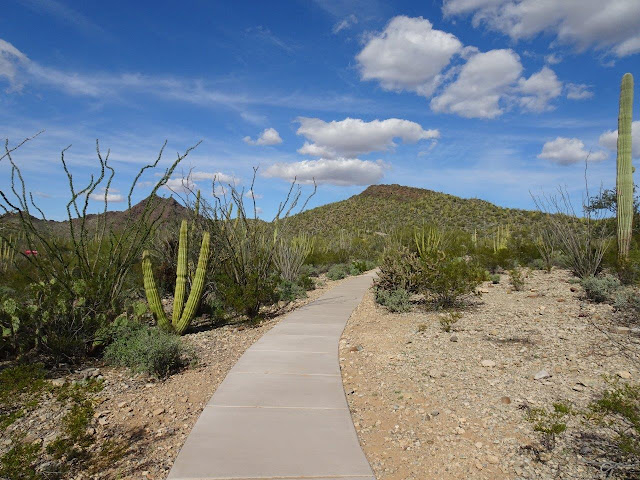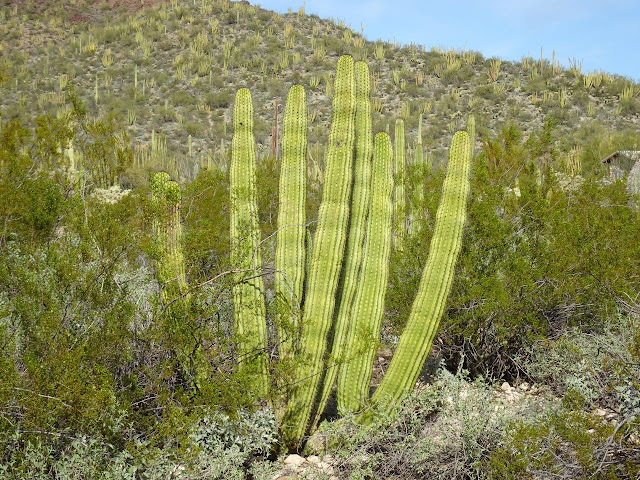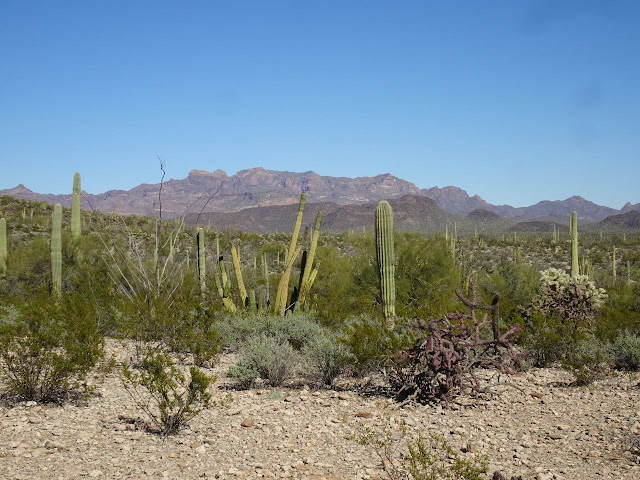Last time I visited this place was about five years ago. It was April and VERY hot, like in the 90s. Unfortunately, this campground does not have electrical hookups, and at that time, the generator hours were very limited during that month, with the result that I was very uncomfortable sitting in my "tin can" home, so went for what was supposed to be an easy hike. Turned out not to be so easy, so I complained to the rangers that generator hours should be adjusted according to the weather, not according to the month.
This trip was much better because it is January and temperatures were in the upper 50s and lower 60s during the day, and down to the lower 40s at night. Also, they had increased their generator hours substantially, so I was able to keep everything charged.
Anyway, some photos I took of the campground and a couple of short walks around the perimeter trail. What is nice about this campground is that all the roads and campsites are paved. I like paved roads because it keeps the dust down, and I can leave windows open.
Campsites are also very long, with lots of greenery between them for privacy.
Also, the back of the campground is dedicated to tenters and people who do not want to use or hear the noise of generators, which can be used from 8-11 am and 3-6 pm.
Typical view down one of the campground roadways.
Surrounding this large campground is a hiking trail that is easy to walk and easy to get to. Parts of it are paved to make it handicap accessible.
OK, here we go with my identifying plants. This is a creosote bush. When you rub a leaf between your fingers or pour water on it, it smell strongly of burning rubber.
And this is a clock-face prickly pear. I had to look this one up, but it is distinguished from regular prickly pear cactus by the very round pads.
And this is a palo verde tree. It has extremely tiny leaves, but it gets it name because of the chlorophyll on the branches and trunk. Having tiny leaves means the plant can retain water in hot weather, making it drought resistant. During the spring it will be covered in yellow flowers.
The organ pipe cactus was named such because it looks like the rows of pipes in an organ. Mostly, this cactus lives in warmer Mexico, but this national park borders Mexico and includes a small part of this plant's range. Both of these photos show organ pipe cactus, even though the second one is slightly laying down.
This is a cholla tree. It is actually a cactus, and there are quite a few varieties. Some people call this a jumping cholla because the cactus segments seem to jump onto your clothing.
This one is a bit early but it is beginning to bloom.
Don't pet this "teddy bear" cholla because you will get a lot of spines in your hand!
Who says the desert is empty???
This is an ocotillo. Like the palo verde, it has very tiny leaves and often looks dead. However, when the rains come in spring, it will grow more leaves and have dazzling red flowers at the tips of its branches.
Not sure what this shrub is.
This tree has an air plant living in it--mistletoe!!
Just another beautiful view.
Hard to see, but this whole hillside is covered with organ pipe cacti.
And to end with this tiny hedgehog cactus. They grow in clumps but are only about 5-6" tall.

















 \
\















No comments:
Post a Comment